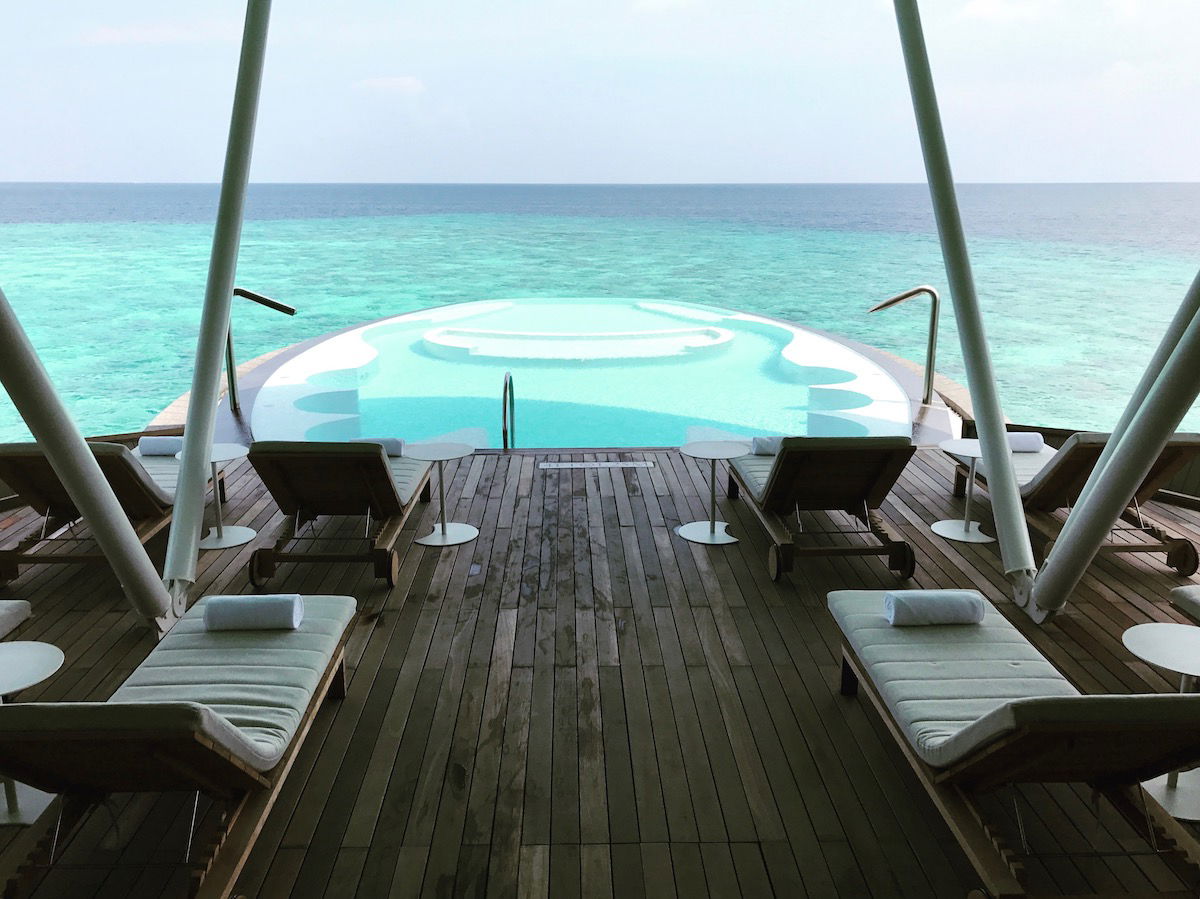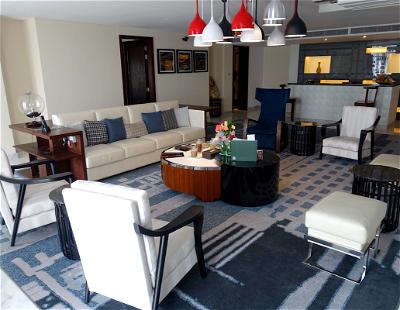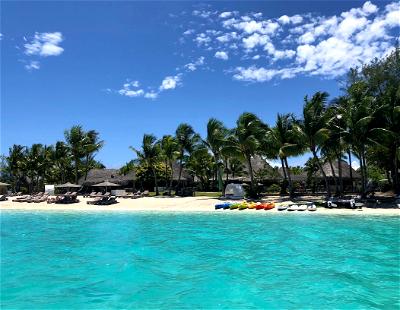Marriott Bonvoy is making some changes to how hotels are reimbursed when members redeem points for a stay. While this isn’t necessarily bad news, it will almost certainly impact the value of many award redemptions.
In this post:
Marriott’s current award night reimbursement policy
I’m sure I’m not the only one who finds the economics of hotel loyalty programs to be fascinating. For the most part, the global hotel chains don’t actually own their individual hotels. Rather they typically just have management or franchise contracts for them, and they get a percent of the revenue.
This raises the question of how hotels get paid when you redeem points, since the individual hotel and loyalty program are very different parties for these purposes. As a general rule of thumb, here’s how it currently works with Marriott Bonvoy:
- When the hotel isn’t full, the loyalty program compensates the hotel at some reimbursement rate that’s slightly above the marginal cost of servicing a room, etc.
- When the hotel is full (think 90-95%+ occupancy), the loyalty program compensates the hotel close to the average daily rate, in recognition of the fact that the room may have otherwise been sold for cash
This system leaves a lot of hotel owners unhappy. I can understand the concept behind the current system, but it doesn’t reflect the volume of points that members are redeeming.
Some hotels are very popular with those redeeming points. Let’s just theoretically say that a hotel is 80% full, and half of the guests are redeeming points (it’s not usually that high, but I’m just giving an example). Obviously the economics of that aren’t great for the hotel, since the hotel isn’t full enough to get the higher award reimbursement, but rather is getting paid very little for a lot of guests.
So while the hotel might be charging guests paying cash $400 per night, it could be that Marriott is just reimbursing the hotel at $80 per night (I’m making up these numbers, purely for illustrative purposes).

Marriott Bonvoy changing reimbursement for award nights
Marriott is planning to adjust how hotels are reimbursed for award nights. This is because of dissatisfaction of some hotel owners, along with the desire to attract more hotel owners to join Marriott. As reported by View from the Wing, here’s what Marriott has told hotel owners:
Today’s reimbursement process is complex, relies heavily on historical performance, and may influence hotel teams to pursue occupancy targets at the expense of profit. Your input has been heavily used to target these known pain points to revise the reimbursement framework, and better enable hotels in creating and executing against an optimal pricing strategy.
By reducing overall reimbursement complexities, hotels will have a single percentage applied to daily Loyalty RevPAR for standard award redemptions, as opposed to the current process that applies a Base Rate as well as multiple percentages based on daily occupancy.
As in previous years, each hotel will be assigned to an annual Redemption Reimbursement Policy in October for the calendar year ahead based upon brand tier, as well as redemption volume, and/or penetration as of Trailing Twelve Months from June 2023.
Just to simplify this a bit, the idea is that going forward, hotels won’t be reimbursed very little if a hotel isn’t full, and a lot if the hotel is full. Rather, hotels will have a standardized award reimbursement rate, presumably based largely on their cash rates and other economic factors. Furthermore, redemption volume will factor into this, so the more guests that a hotel has redeeming points, the more the property will be reimbursed.

What could this mean for Marriott Bonvoy members?
Changes to how hotels are reimbursed for award nights will almost certainly impact members. After all, the number of points charged for a stay doesn’t necessarily correlate to how much a stay would cost in cash, but rather it reflects Marriott’s internal reimbursement costs.
With that in mind, a few thoughts on Marriott’s memo:
- It remains to be seen if Marriott plans to invest more money in reimbursing hotels for award nights, or if the company is simply reshuffling reimbursement, taking away some reimbursement from some properties, and giving more to others
- When it comes to how hotels feel about award guests, this change should be positive for hotels that aren’t consistently full and see a lot of award guests (as they should get more reimbursement), while it will probably be negative for hotels that are consistently full (since they’re currently getting very high reimbursement)
- Marriott Bonvoy no longer has award charts, or any caps on award pricing; I wouldn’t be surprised if this leads to a further devaluation
- I imagine this will eliminate some of the sweet spot redemptions that exist with Marriott Bonvoy, at properties that charge a lot with cash, but are a good deal with points (due to not being full)
As much as I criticize Marriott Bonvoy, I have to give the program credit for having great award availability at aspirational properties, despite the program technically having blackout dates. For example, good luck redeeming points at Hilton’s top properties (like Waldorf Astoria properties in Amsterdam, Beverly Hills, Los Cabos, Maldives, etc.). Meanwhile Marriott’s properties generally have pretty good award availability.

Bottom line
Marriott Bonvoy is changing how hotels are reimbursed for award nights. Historically it was all about the occupancy level at a hotel, with properties being reimbursed very little if a hotel isn’t full, and being reimbursed a lot if it is full. Going forward, reimbursement will be more consistent, and will reflect redemption volume.
This will definitely impact award pricing at many Marriott Bonvoy properties over time, since this will change Marriott’s costs associated with redemptions at various hotels. Only time will tell how exactly this plays out, though, since we don’t know what the new reimbursement formula is.
What do you make of these Marriott Bonvoy award reimbursement changes?





Interesting that nobody commented on the "fifth night free" if you redeem points you get one night "free" if you stay for five. I wonder how this will affect things. If there is a devaluation, they will need to raise the credit card certificate values and they will need to raise the amount you can add to a certificate. Marriott does make it easier to use the certificates than IHG and other programs. The real...
Interesting that nobody commented on the "fifth night free" if you redeem points you get one night "free" if you stay for five. I wonder how this will affect things. If there is a devaluation, they will need to raise the credit card certificate values and they will need to raise the amount you can add to a certificate. Marriott does make it easier to use the certificates than IHG and other programs. The real value begins at Platinum level but the value at the specific hotel is inconsistent.
Tells me nothing about how Marriott reimburses a property with 95% occupancy five months of the year and 50% occupancy the rest of the year. But then, it doesn't look like Marriott is telling its owners how that works, either. They'll have to wait until October to find out?
Very interesting. Does anyone know how the economics work for elite breakfast? Some hotels give you a $0 bill in the restaurant that you have to sign while others have a buffet or restaurant meal where you don't have to sign anything. Some properties give you a muffin while others have an extensive buffet and others let you order anything off the menu. Who pays for the breakfast - Marriott, the hotel, or do they...
Very interesting. Does anyone know how the economics work for elite breakfast? Some hotels give you a $0 bill in the restaurant that you have to sign while others have a buffet or restaurant meal where you don't have to sign anything. Some properties give you a muffin while others have an extensive buffet and others let you order anything off the menu. Who pays for the breakfast - Marriott, the hotel, or do they split it? How much do hotels get paid (actual prices or some fraction thereof)? Or is breakfast already included in whatever reimbursement Marriott provides for room rate with no additional money for breakfast?
Remember that RevPAR takes occupancy into account (I'm taking loyalty RevPAR to mean cash revenue from Bonvoy members divided by all rooms not occupied by guests who aren't Bonvoy members paying cash (viz. counting vacant rooms and rooms occupied by cash Bonvoy members), so a hotel that's consistently low occupancy but charges a high cash rate would have a low RevPAR (but a high ADR), so might not see much of an increase.
The big...
Remember that RevPAR takes occupancy into account (I'm taking loyalty RevPAR to mean cash revenue from Bonvoy members divided by all rooms not occupied by guests who aren't Bonvoy members paying cash (viz. counting vacant rooms and rooms occupied by cash Bonvoy members), so a hotel that's consistently low occupancy but charges a high cash rate would have a low RevPAR (but a high ADR), so might not see much of an increase.
The big overall change is that the reimbursement rate is more continuous instead of jumping discontinuously at occupancy thresholds: I was a night auditor at a Hampton with about 75 rooms a decade ago and I was permitted by the GM to give out 50% walk-in discounts like candy if we were only a room or two away from crossing 90% occupancy and there was an award stay, as the difference in reimbursement was like $15 to $125 if we went from sub-90% to 90%-plus.
Really struggling to parse this sentence "...from Bonvoy members divided by all rooms not occupied by guests who aren't Bonvoy members paying cash". Do you mind explaining this further? Fascinated by this topic.
Also - since you seem to be knowledgeable - would you say this incentivizes high-end hotels to play more games with base room award availability?
It was a bit tortured because I edited it a few times, I apologize.
Some background in hotel accounting:
ADR: Average Daily Rate - total room rate divided by number of rooms occupied. So at a 10-rooom hotel where three rooms are occupied at $300 each ($900 total) and seven vacancies, the ADR is $300.
RevPAR: Revenue per available room - total room rate divided by rooms that could have been sold (out-of-order doesn't count)....
It was a bit tortured because I edited it a few times, I apologize.
Some background in hotel accounting:
ADR: Average Daily Rate - total room rate divided by number of rooms occupied. So at a 10-rooom hotel where three rooms are occupied at $300 each ($900 total) and seven vacancies, the ADR is $300.
RevPAR: Revenue per available room - total room rate divided by rooms that could have been sold (out-of-order doesn't count). In our example, assuming none of the rooms is out-of-order, the RevPAR is $90.
Then it's a question of what counts as loyalty RevPAR. I would guess that this is calculated to exclude non-member stays and if it's being used to calculate a reward reimbursement rate, counting the reimbursements for reward stays also gets complicated, so I suspect reward stays are likewise excluded.
So let's say in our ten room example, one of those cash rooms is non-member, and we replace a vacant room with an award stay. Loyalty RevPAR (by my hypothesis) would be $600 divided by 8 or $75, so Bonvoy pays some proportion (probably close to 100%) of $75. If Bonvoy targets a reimbursement cost per point of say 0.5 cents, this would tend to be a 15k point redemption (to the Bonvoy member, this might look like a not-too-bad 2cpp redemption), depending on how good the prediction logic is.
As with any metric, it's gameable given sufficient motivation, but this does probably remove an incentive for a low occupancy property to block award availability (under the previous system, the reimbursement would probably be $30-ish) unless they can sell a lot of rooms outside Bonvoy channels (but if they can do that, why are they flagging with Marriott?). But if it's an overall increase in reimbursement rates, point rates should be expected to increase as well. Marriott also probably wouldn't be implementing this unless they were confident that they can do a good job of predicting loyalty RevPAR, which perhaps means less expectation of an extreme value redemption.
Thanks for breaking it down like that! And extra thanks for being a good commenter. Should be interesting to see as forecasting models get better and better if outsized value redemptions get fewer and fewer.
@Levi
Hit me up if you ever need occupancy.
I'd gladly walk-in and earn the, per his famous quote, "illustrious LIFETIME DIAMOND status".
Devaluation has recently been huge, and I am sure more is coming while quality and service is getting bad. From a more than 2500 nights patron.
I possess a wealth of knowledge on the intricate workings of hotel loyalty programs. Through my vast experience and unwavering expertise, I have arrived at the indisputable conclusion that all other programs such as Marriott Bonvoy or World of Hyatt pales in comparison to the majestic splendor of the Hilton program.
The mind-boggling value offered by the Hilton program continues to captivate my refined sensibilities. Oh, by the way, allow me to regale you...
I possess a wealth of knowledge on the intricate workings of hotel loyalty programs. Through my vast experience and unwavering expertise, I have arrived at the indisputable conclusion that all other programs such as Marriott Bonvoy or World of Hyatt pales in comparison to the majestic splendor of the Hilton program.
The mind-boggling value offered by the Hilton program continues to captivate my refined sensibilities. Oh, by the way, allow me to regale you with my most recent triumph — I have achieved the illustrious LIFETIME DIAMOND status, a feat that eludes a staggering 99% of the readers who peruse travel blogs.
I take great delight in showcasing screenshots of my exalted status at every opportune moment, igniting an insatiable envy within those who dare oppose me
I couldn't agree with you more. Hilton is it, the others are sh*t.
Free nights do present interesting economics. I recently stayed at a Hyatt Place (category 4) with a free night certificate. When I checked-out, the desk agent handed me a receipt for $35 + tax. I asked what it was, and the agent said, "oh, you do not need that, but that's what the hotel gets from Hyatt." Seems low to me for a room that was $150+tax per night
Why did the desk agent hand that to you?
Just wondering.
No clue. I was wondering the same thing
Just stayed last night at a Hyatt Place in Pittsburgh right by the Taylor Swift concert. Cash room rates were $1999/night and it was 100% full. I used points for the last room available. I wonder what the reimbursement rate was!!
Interesting. Thank you Ben, I really enjoyed reading while sitting on my porch with my coffee.